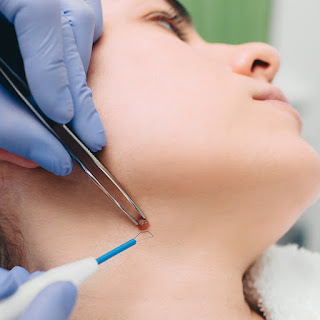What to know before removing a mole?
Moles are small clusters of pigmented cells that often appear as dark brown spots on the skin. While many are harmless, some can be aesthetically bothersome or raise concerns due to changes in appearance. Whether you’re considering mole removal for cosmetic reasons or health concerns, it's important to be well-informed before taking the step.
Understanding the factors involved in mole removal can help ensure a safe and satisfactory experience. From evaluating the type of mole to selecting the right clinic, every decision contributes to a smooth outcome.
Types of Moles and Why They Matter
Not all moles are created equal. Some are flat, others raised; some are smooth while others may feel rough. Typically, moles that change in shape, size, or color warrant a medical evaluation to rule out potential skin conditions such as melanoma.
Benign moles, which are non-cancerous, can be removed easily for cosmetic reasons. However, suspicious moles need to be biopsied before any removal is done. Consulting a qualified dermatologist ensures that you're taking the right approach tailored to your specific skin type and mole characteristics.
Choosing the Right Procedure and Clinic
There are several methods for mole removal, including surgical excision, laser removal, and shave excision. The most appropriate technique depends on the size, type, and location of the mole. For instance, facial moles may benefit from laser treatments to minimize scarring, while larger or deeper moles might require surgical procedures.
If you’re considering professional help, it's wise to explore trusted clinics for mole removal in Islamabad. Qualified dermatologists can evaluate your mole and suggest the safest removal technique, ensuring both medical safety and cosmetic satisfaction.
What to Expect During and After the Procedure
The mole removal procedure is generally quick and minimally painful. Most treatments are done under local anesthesia and take less than 30 minutes. You might feel a slight pinch or pressure during the procedure but no significant discomfort.
Post-treatment care is crucial. You’ll likely be advised to keep the area clean, avoid sun exposure, and apply prescribed ointments to promote healing. Some redness or scabbing is common, and in most cases, healing completes within 1 to 2 weeks. Depending on the method used, a small scar might remain, but it typically fades over time with proper care.
Risks, Side Effects, and Scarring
Like any skin procedure, mole removal comes with potential risks such as infection, allergic reactions, or scarring. However, these are rare when the procedure is done by a qualified practitioner in a sterile environment.
Scarring is one of the most common concerns among patients. Choosing the right method, following aftercare instructions, and protecting the area from the sun can significantly minimize scar formation. Your dermatologist will guide you through preventive steps and may suggest scar-minimizing products if needed.
Cost and Considerations
Cost is another important factor. It varies depending on the type of procedure, the number of moles removed, and the clinic's reputation. Cosmetic mole removals are typically not covered by insurance, so it’s wise to discuss the expenses during your consultation.
Getting a clear understanding of the cost upfront helps you make an informed decision. Clinics that specialize in dermatological and aesthetic care will usually provide comprehensive pricing and procedure breakdowns to avoid any surprises.
Conclusion: Choose Expertise and Safety
Before undergoing mole removal, do your research, consult a licensed dermatologist, and understand both the procedure and aftercare. Whether you’re removing a mole for health reasons or personal preferences, choosing a professional clinic ensures peace of mind and optimal results.
If you’re looking for trusted skin care services, Royal Cosmetic Surgery PK offers expert mole removal treatments tailored to your needs, ensuring safe practices and high-quality care every step of the way




Comments
Post a Comment